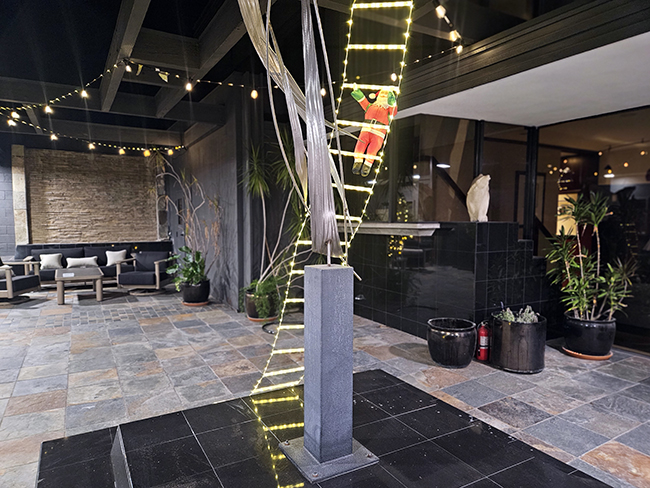Claremont’s updated tree policy moves to city council
The verdurous canopies of elms, oaks and sycamores found throughout the city of Claremont do more than just provide shade to residents and visitors. Their majestic beauty and historic longevity are proof that it takes a village to continue their legacy.
Whether you’re enjoying a Sunday drive beneath a baldachin of American Elms on Indian Hill Boulevard or strolling under the Chinese Elms along Harvard Avenue, it’s hard to imagine our city without them.
Claremont has long been proclaimed the City of Trees, but without proper maintenance and restoration of its urban forest, the leaf-scape could be no more.
To insure its natural beauty endures, the city adopted the Tree Policies and Guidelines Manual in 1997. The 81-page manual serves as a defining set of rules for proper maintenance and enhancement of the city’s urban forest of more than 20,000 trees.
Although last revised in 2011, city staff recently recognized the need to update the existing manual and, in June 2013, suggested soliciting public input in doing just that. Claremont’s Tree Committee as well as the Community and Human Services Commission were in agreement and so began the lengthy revision process.
With the assistance of the Inland Urban Forest Group (IUFG), city staff hosted a series of four well-attended educational workshops over six months that provided a community opportunity to share ideas and discuss various policy issues. Sustainable Claremont’s Tree Action Group (TAG) attended the workshops and was praised by the commission for role they played in providing public feedback on the recommended policy changes.
Those changes came before Claremont’s Community and Human Services Commission on Wednesday evening who approved the revisions without amendments and recommended the updated tree policy move forward to city council.
The most notable revisions, among others presented to the Commission, were the designation of street trees, resident notification of new and replacement trees, solar panel accommodation, pest and disease control, as well as watering methods.
Designated street trees
The existing Tree Policy Manual designates one to two street trees for each city street or by block. However, the Inland Urban Forest Group recommends revising that policy to include at least three to five tree species per street.
Currently, the city offers 272 different species of trees. Among the most common species in Claremont are Crape Myrtle, American Sweetgum, California Sycamore, Coast Live Oak, Canary Island Pine, Holly Oak and Jacaranda. Surprisingly, of the 272 species available, 217 make up less than half a percent of Claremont’s total urban forest.
By increasing the number of designated species, IUFG believes the city could develop a thoughtful list of suitable species that takes into account grow space, overhead clearance conflicts, tree canopy, availability of water and resident preference. It would also enable staff to include drought-tolerant varieties as a viable option for homeowners who wish to reduce their water consumption.
Resident notification of new and replacement trees
Although no prior procedure was in place regarding resident notification of new and replacement trees, a practice that began during the 2012 winter planting cycle may now be incorporated into a new policy.
Currently, the city’s arborist creates a list of planting sites, places a small mark at the curb to identify the proposed location and property owners are notified via letter that the city is considering a tree at the marked location. Residents must then confirm they are committed to watering and caring for the newly planted tree before it is placed in the public easement.
Residents have been receptive to this practice and as the economy has improved, so has the acceptance of city trees. According to reports, 34 out of 76 property-owners declined a tree in 2009-2010. However, during 2011-2012, only 6 of 73 property owners declined. The past year has been the most successful with more than 100 trees planted.
Installation of solar panels
Solar panel installation is on the rise and, in recent years, two Claremont property owners have requested tree removal to accommodate this green upgrade. The current tree policies manual does not provide any guidelines to address this request. City staff and TAG expressed support for establishing a policy consistent with the California State Law, which prohibits plants from being placed or allowed to grow so that it shades a solar panel more than 10 percent from 10 a.m. to 2 p.m.
Established by the Solar Shade Act, the state legislation proclaims if the tree is in place when the solar panel is installed, the trees have priority and are exempt from the 10 percent requirement. The requirement does not apply to plants already in place or replacement plants that die after the installation of solar panels.
Pest and disease management
A new section will be added on appropriate methods for pest and disease management including Integrated Pest Management (IPM) – a process used to solve pest problems while minimizing risks to people and the environment. Biological controls, cultural controls, mechanical controls and physical controls have been listed as possible approaches as well as chemical controls. According to the report, “Claremont will utilize only the most selective pesticides that will accomplish their intended job and be safe for other organisms and for the air, soil and water quality.”
The policy clearly states that chemical applications will be utilized only when needed, in combination with other methods and applied in a way that minimizes their possible harm to people and the environment.
Watering in drought conditions
With the worst drought we’ve seen in decades, watering methods play a vital role in a tree’s health. Additional information on deep watering and how to water new as well as established trees will be included in the policy revision. City staff will issue watering information, particularly during extreme weather conditions, through the city’s website and weekly updates.
Water bags for newly-planted trees have been presented as an optional watering method and a cost-effective alternative to city-operated water trucks. The bags are engineered to provide slow-release, deep-water saturation that contributes to the good health and appropriate root growth for newly planted trees. If implemented, the water bags could be provided by the city and filled by the property owner once per week.
According to Claremont resident Mark von Wodtke, a registered landscape architect and a member of TAG, the water bags are a good idea for newly planted trees, but for Claremont’s established urban forest, it’s just not enough.
“Our urban forest is in trouble,” he says. “Take a look at the three elms on the northwest corner of Memorial Park. They’re in distress.” Citing the existing drought, a recent sidewalk renovation at Memorial Park and an insufficient irrigation system, Mr. von Wodtke says the elms are threatened. “The roots have been pruned and they’re not getting the water they need. We need some bubblers in there.”
Also a concern for Mr. von Wodtke and other members of the Tree Action Group are the existing tree pruning policies in place. Currently, the city implements a “grid pruning” practice—the systematic pruning of all trees on every street, regardless of whether the trees are in need of pruning.
TAG member Doug Lyon believes this practice isn’t healthy for the trees and shared his beliefs with the Commission. “This policy isn’t ready. It needs to be sent back to the workshop setting for further discussion,” Mr. Lyon said. “We need to eliminate grid pruning.”
Director Kathleen Trepa later addressed the commission and TAG regarding the city’s current pruning techniques. Bottom line? Grid pruning is more cost-effective and the city will continue with the practice. According to Ms. Trepa, it costs the city $49 per tree as opposed to $120 per tree using the species pruning method.
With roughly 24,000 trees maintained by the city, the dollars add up quickly.
Overall, the community and human services commission had nothing but praise for TAG and city staff for their tenacity and thoroughness in revising Claremont’s Street Policies and Guidelines Manual. All members seemed pleased with the majority of the revisions and hoped to continue to utilize TAG in further expanding Claremont’s tree conservation efforts.
The Tree Policy revisions will be reviewed and discussed at a future city council meeting. No date has been set.
—Angela Bailey
news@claremont-courier.com










0 Comments